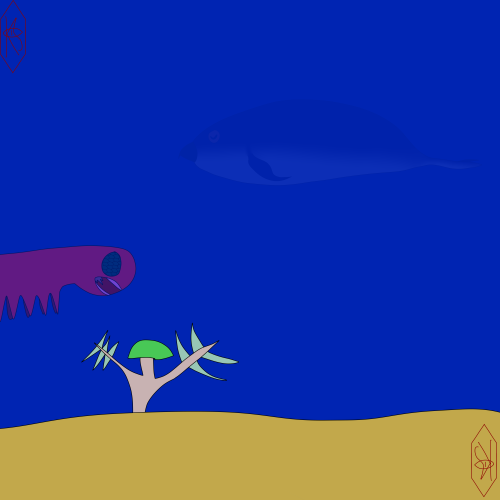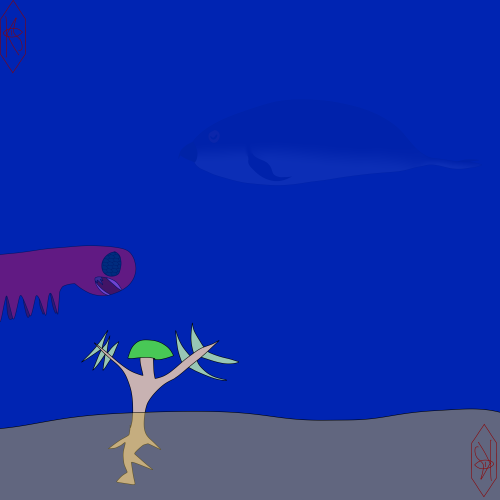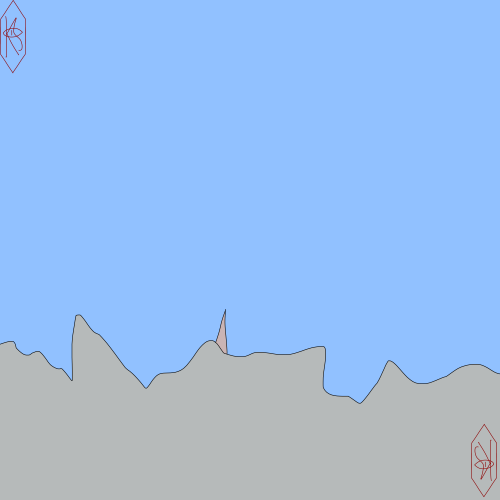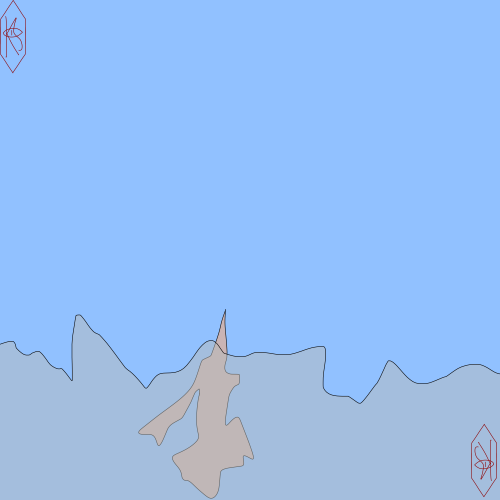Mardix, More Commonly Called A Sea Fungus, Is A Poisonous Marine Fungi, They Are Poisonous Not Due To


mardix, more commonly called a sea fungus, is a poisonous marine fungi, they are poisonous not due to any biological toxins, but due their intense saline content being too high for even the most salt adapted animals, causing at the least, extreme pain and discomfort and vomiting, and at the most, death, a painful one, they have gills growing from their sides, they usually have one but as they get older and their "roots" are growing farther from the exposed body they will start growing more, though this rule isnt always solid, like some of the time they will grow a second one when theyve just barely extended their "roots", though usually the third fourth fifth and sixth gill structures when they grow their "roots" farther, they can be eaten by only one animal, a swimming hawk, when they are desperate enough for food they will swim down to the bottom of the ocean in search of food, if you have any questions about this animal please dont be afraid to ask
-
 joshurequiem liked this · 3 years ago
joshurequiem liked this · 3 years ago -
 jar-of-men liked this · 3 years ago
jar-of-men liked this · 3 years ago -
 bestia-02 liked this · 3 years ago
bestia-02 liked this · 3 years ago
More Posts from Speculative-world

carola, more commonly called an apex shrimp, are large hypercarnivorous generally herbivorous omnivore, these large crustaceans are fast and have almost hemispheric tail which helps them push water and steer very fast, they can see in full colour vision, they have razor sharp "teeth" which are extensions from their shells which all crustaceans have and derive their teeth from, they have canine like teeth on the insides of their mouths which go through their oesophagus until the stomach, these teeth will grind up the food they ate into easily digestible pieces, their razor teeth also assist in detaching plant parts from their stems to eat them, though they are mostly used for tearing flesh from their prey and causing general harm to them to slow them down, they will hunt almost every animal in the ocean, though arent the tallest, they hunt false plants, snow rays, bird whales, fan fins, pollen shrimp, and even unintentionally orbiting nurses, though that is only because theyre on the animals they eat, they will drift aimlessly throughout the ocean during times where they need to rest, eating easy prey or plants during this time, when they see bigger prey they will immediately use their conserved energy to kill them, they arent very territorial and are willing to coexist with other carola as long as they dont try to eat their food, though that rule doesnt apply to their children who will orbit around them and eat food they hunt for them and will eat plants, though when they reach maturity they are no longer given the treatment and will be killed if they attempt to eat their parents food, if you have any questions regarding this shrimp please dont be afraid to ask



uluret, more frequently called a night sparrow, are small mesocarnivorous insectivorous granivorous omnivorous birds, they are the only fully nocturnal dumunoan birds, they are also the smallest dumunoan birds on average, being only 47 cm long and 104 grams on average, they niche partition from the flying reptilians by primarily focusing on the temperate beetle like insects of dumuno instead of the flying ones which the flying reptilians primarily focus on, though they will both eat the others specialization if theyre hungry enough, leading too a lot of competition between the two, this results in dead ulurets being found strewn about fields on rare occasions and volios with torn wings when food is scarce such as late autumn, they are very sensitive to the venom contained in volios, resulting in them dying from it very fast, and they have sharp claws which can tear through the thin membrane of the reptiles wings, they also partake in activities which earth squirrels do, such as burying their food during autumn for later consumption during winter, their claws are specialized for digging and look like small spades, they, like squirrels, will also bring their food to their nests, though since they primarily only eat insects and seeds, this treatment is saved for seeds, they will store large quantities of seeds within their nests before winter and only leave to get the stockpiled ones when they run out, this results in most of them accidentally planting plenty of plants across dumuno, if you have any questions regarding this organism please dont be afraid to ask


saxsus, commonly called a rock stem, are mountainbound fungi, theyve evolved to be stiff like a rock which stops them from getting crushed and stops them from getting eaten, though the animals which eat them are evolving to notice the differences, leading to an evolutionary arms race leading too the rock stems evolving to look more like a rock, they were farmed by early dumunoan humans as a form of salt before they discovered how to get granulated salt, they did this by adding a few shavings onto them, if you have any questions regarding this organism please dont be afraid to ask



lemex, more commonly called a northern hare, is a hypocarnivorous xylophageous insecitovorous omnivore, they use their specialized "beak" to carve off bark and even clip off small branches from plants, they use their long tongue to pull in large masses of insects living in small colonies beneath the bark or living in branches, these subarctic hares thrive in forests but like most dumunoan hares they wander around steppes in search of bushes, they are considered a rare hunt by nonmodern dumunoan humans and will be taxidermied or will have their skeletons set up in peoples houses to show how competent of a hunter they were, lemex are very hard to hunt though lacking the trait of the rooted hairs of digging burrows, they have been found to dig small holes beneath trees which are sheltered by roots, this makes them hard to hunt since they have a strong sense of smell and hearing and will find their way to their most recent "burrow" and hiding from their hunters who usually walk by them, in a couple hours they will return to their calm feeding moods which will last until they feel threatened, if you have any questions regarding this rabbit like mammal please dont be afraid to ask

flobaeus, more commonly called a flower killer, are large hypercarnivorous florivorous insectivorous insects, theyve evolved strong spikes on top of them to avoid being stepped on, these spikes dont protect them entirely from being stepped on, instead being a defense of association, the larger animals which would step on it will learn that if they step on it they will be in a lot of pain, they are the only dumunaon insects which can have proboscoused parasites on them due to their size, in the early days of dumuno they were thought to be an "alpha" shocking scavenger but that is completely false and an outdated theory, though they do go into nests to feast on them which encouraged this fallacy, they have a mildly electrically resistant exoskeleton to protect themselves during these invasions, they also will climb rose stems of duo roses and eat the flowers if food is scarce, during mating season in spring they will use the pigments within these roses theyve consumed too change the colours of their spikes, before their mating season most of them will purposely go out of their way to eat many duo roses to increase their chances of a mate, they will judge their mate by the vibrancy of their spikes, the flobaeus which lays the eggs will mix its eggs with the eggs of shocking scavengers in a nest invasion, this will result in lots of food for the flower killers to eat when they hatch, if you have any questions regarding this insect please dont be afraid to ask
